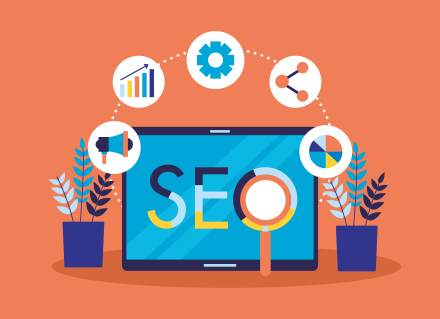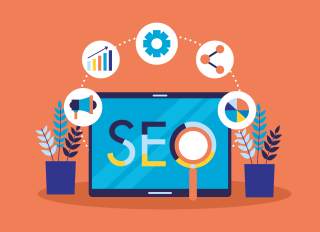
In today’s hyper-digital marketplace, having a website isn’t just an option for small businesses—it’s essential. But as we move deeper into 2025, simply having an online presence isn’t enough. Your website needs specific features to compete effectively, convert visitors into customers, and support your business growth.
At Engage Ascend Creative, we’ve watched web design evolve dramatically over the years. The features that impressed visitors in 2020 are now basic expectations, while new technologies have created exciting opportunities for businesses of all sizes. Let’s explore the must-have website features every growth-focused small business needs this year.
Mobile-First Design (Not Just Mobile-Responsive)
The days of designing for desktop and then adapting to mobile are long gone. With over 70% of all website traffic now coming from mobile devices, your website must be built with mobile users as the primary audience.
Mobile-first design means exactly what it sounds like: designing your website for smartphones first, then scaling up to larger screens. This approach ensures that mobile users get the best possible experience—quick loading times, easy navigation, and properly sized elements that don’t require zooming or horizontal scrolling.
Google now predominantly uses mobile versions of websites for indexing and ranking, making mobile optimization crucial for your search visibility. A clunky mobile experience not only frustrates users but can actively harm your search rankings.

Lightning-Fast Load Speed
In 2025, users expect instant gratification. Research shows that 53% of mobile visitors will abandon a site that takes longer than three seconds to load. Every second of delay can result in a 7% reduction in conversions.
Core Web Vitals—Google’s metrics for user experience—now heavily influence your search ranking. These metrics measure loading performance, interactivity, and visual stability. Optimizing these elements isn’t just good for users; it’s essential for SEO.
To improve loading speed:
- Optimize image sizes and formats
- Implement browser caching
- Minimize HTTP requests
- Use content delivery networks (CDNs)
- Reduce server response time
- Eliminate unnecessary plugins and scripts
Remember, speed isn’t just about the initial page load—it’s about how quickly users can interact with your site and how smoothly the experience feels.
Intuitive Navigation and User Flow
Your website’s navigation is like a roadmap for visitors. In 2025, users have little patience for confusing menus or buried information. Navigation should be intuitive, allowing visitors to find what they need within three clicks maximum.
Best practices include:
- Clear, descriptive menu labels
- Consistent navigation across all pages
- Hamburger menus for mobile views
- Breadcrumb trails for complex sites
- Prominent search functionality
- Logical content hierarchy
Consider how users actually move through your site. Heat mapping tools can reveal where visitors click, how far they scroll, and which elements capture their attention. Use these insights to optimize your user flow and guide visitors toward conversion points.
Integrated Booking and Scheduling
For service-based businesses, online booking capabilities are no longer optional. Customers expect to schedule appointments, consultations, or services without picking up the phone—and often outside of business hours.
Modern scheduling tools offer:
- 24/7 availability for bookings
- Automatic confirmation emails
- Calendar syncing to prevent double-booking
- Payment processing integration
- Reminder notifications
- Cancellation and rescheduling options
The ability to capture business while you sleep gives you a significant advantage over competitors who still rely on phone calls and manual scheduling. At Engage Ascend Creative, we can help integrate these booking solutions seamlessly into your website design.
Strategic Lead Capture Mechanisms
Your website should be actively working to convert visitors into leads. In 2025, sophisticated lead capture goes beyond basic contact forms to include:
- Interactive chatbots for immediate engagement
- Exit-intent popups to reduce bounce rates
- Multi-step forms that feel less overwhelming
- Lead magnets offering valuable resources
- Quiz or assessment tools that provide personalized recommendations
- Smart CTAs that change based on user behavior
The key is balancing lead capture with user experience. Intrusive popups and aggressive tactics can backfire, but strategically placed conversion opportunities can significantly increase your lead generation without frustrating visitors.

Trust Signals and Social Proof
In an era of increasing online skepticism, establishing trust is paramount. Your website needs clear signals that build confidence in your business:
- Client testimonials and case studies
- Industry certifications and awards
- Security badges and SSL certificates
- Privacy policy and terms of service
- Professional association memberships
- Media mentions or publications
Customer reviews have become particularly crucial, with 93% of consumers saying online reviews impact their purchasing decisions. Showcasing authentic feedback from satisfied customers creates social proof that can significantly boost conversion rates.
Analytics and Performance Tracking
What gets measured gets improved. In 2025, basic analytics aren’t enough—you need comprehensive tracking to understand how your website performs and where improvements can be made.
Essential analytics capabilities include:
- User behavior tracking
- Conversion funnel analysis
- Heat mapping and session recording
- A/B testing capabilities
- Goal tracking and attribution
- ROI measurement for marketing activities
This data helps you make informed decisions about website improvements rather than relying on guesswork. The most successful small business websites continually evolve based on real user data.
Content Management System (CMS)
Gone are the days when updating your website required a web developer. Today’s small businesses need the ability to manage content independently, keeping information fresh and relevant.
A good CMS should allow you to:
- Update text and images easily
- Add new pages or blog posts
- Manage product information
- Schedule content publication
- Control user permissions
- Maintain SEO elements
WordPress remains popular, but specialized CMS platforms like Shopify (for e-commerce) or Squarespace (for visual businesses) might better suit specific business models. At Engage Ascend Creative, we help clients select and implement the right CMS for their unique needs.
Integration Capabilities
Your website doesn’t exist in isolation—it’s part of your broader digital ecosystem. In 2025, seamless integration with other business tools is essential for efficiency and data consistency.
Important integrations include:
- Email marketing platforms
- Customer relationship management (CRM) systems
- Social media accounts
- Payment processors
- Inventory management systems
- Accounting software
- Marketing automation tools
These connections create a unified digital infrastructure that saves time, reduces errors, and provides better insights into your business performance. When evaluating website platforms, consider their integration capabilities with your existing business tools.

Advanced Security Features
Cybersecurity threats continue to evolve, and small businesses are increasingly targeted. Your website needs robust security features to protect both your business and your customers.
Essential security elements include:
- SSL certification (HTTPS)
- Regular security updates and patches
- Secure hosting with malware scanning
- Strong password policies
- Regular data backups
- GDPR and privacy compliance
- Two-factor authentication for admin access
Security breaches can devastate a small business, damaging reputation and potentially resulting in legal liability. Investing in proper website security isn’t optional in 2025—it’s a fundamental business requirement.
Accessibility Compliance
Web accessibility has moved from a nice-to-have to a must-have feature. Beyond the ethical considerations of making your site usable by people with disabilities, accessibility compliance helps you:
- Avoid potential legal issues
- Improve SEO performance
- Reach a wider audience
- Enhance overall usability
The Web Content Accessibility Guidelines (WCAG) provide standards for making websites accessible. Key elements include proper contrast ratios, alternative text for images, keyboard navigation options, and screen reader compatibility.
Local SEO Optimization
For small businesses serving specific geographic areas, local SEO features are crucial. Your website should include:
- NAP (Name, Address, Phone) consistency
- Google Business Profile integration
- Location-specific content
- Local keyword optimization
- Embedded Google Maps
- Structured data markup for local businesses
- Mobile-friendly directions and contact information
These elements help your business appear in local search results and map listings—critical touchpoints for customers searching for nearby products and services.
The Bottom Line
As we navigate 2025, your website must work harder than ever to attract, engage, and convert visitors. The features outlined above aren’t just nice additions—they’re essential components of a website that effectively serves your business goals.
At Engage Ascend Creative, we specialize in designing and developing websites that incorporate all these critical elements while maintaining your unique brand identity and business objectives. Whether you’re building a new site or upgrading your existing web presence, we’d love to help you create a digital experience that drives real business results.
Ready to ensure your website has all the essential features for 2025? Contact us today to discuss your specific needs and discover how we can help your small business thrive online.






Leave a Comment